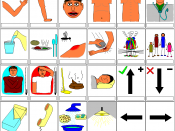Non Verbal Communication is the process of communicating without words. Non Verbal Communication refers to the messages sent through gestures, eye contact, facial expressions, and posture. We send many more non verbal messages than verbal messages. It is estimated that 50 to 90 percent of messages are non verbal.
Non Verbal Communication has few rules and often occurs unconsciously, for instance while speaking we may throw our arms around; while listening a sudden shock may result in a sharp intake of breath. Such non verbal signals add impact to a meaning, and they combine to provide an instant impression in a way that written communication or telephone calls cannot. Actions of this sort are an important part of the communication process. We must be aware of the non verbal messages we send at all times. Careless use of the non verbal messages can send the wrong message. When listening to someone, observe his or her non verbal signals carefully and try to interpret them correctly.
Messages communicated by different types of non verbal communication are listed below:GesturesGestures can both complement and contradict other forms of communication. For example, when one person tells another to turn "left" while pointing right, the gesture contradicts the spoken words. If a person both says to turn right and points right, the gesture complements the words. The gestures that we see in everyday business communication include a wide range of hand and arm movements. When examined in context, they may have specific meanings:Baton-like pointing movements of the hands and arms punctuate words and may communicate control.
Finger wagging and arms crossed over the chest may be signs of disagreement.
A hand or finger covering the mouth may indicate that the speaker is holding something back or is too embarrassed or reluctant to speak.


